Top Family-Friendly Resorts for Your Next Trip
Unlocking Europe’s Best Family-Friendly Destinations for Unforgettable Fun and Relaxation in 2025
Planning a family vacation across Europe in 2025 requires targeted preparation to balance relaxation, culture, and memorable activities for children and adults alike.
Start by defining priorities—beach time, archaeological sites, or urban cultural exploration—so you can compare all-inclusive and bespoke options efficiently; for marketing and travel planning tools consider comprehensive Europe travel marketing resources which provide audience insights and conversion tips for family-friendly resorts.
Actionable steps include mapping age-specific programming, verifying childcare professionals’ credentials, and confirming kid-friendly attractions like local waterparks or indoor play centers.
Use Europe tour packages sparingly: customize rather than overbook, and prioritize family-friendly accommodation with a dedicated kids’ club and family rooms.
Practical budgeting tip: allocate 20% of the travel budget to flexible experiences such as watersports lessons or museum passes that engage multiple ages.
Case study: a family who combined a Sol Nessebar Resort all-inclusive week with short cultural excursions reported higher satisfaction and reduced stress.

Map illustrating a family-friendly European itinerary with resorts, beaches, and cultural stops highlighted
Navigating Premier Kid-Friendly Resorts Across Europe for Families
Choosing a resort means assessing the full offering—from swimming pools and waterparks to land sports and supervised kids’ club programming that offer both fun and learning.
Start by checking certifications for childcare professionals and age-specific programming schedules so every child receives developmentally appropriate activities while parents enjoy luxury for parents amenities or relaxation options.
Look for family-friendly resorts that advertise all-inclusive convenience but verify inclusions: buffet quality, childcare ratios, and evening entertainment suitable for younger guests.
Compare Europe resorts by beach quality—crystal clear waters, shallow bays—and proximity to cultural and leisure experiences like archaeological sites or local festivals.
For actionable comparison, create a simple matrix: columns for watersports, indoor facilities, medical access, and food options; rows for shortlisted family-friendly accommodation. A practical example: Fodele Beach & Waterpark Resort excels in supervised splash zones and structured camps, whereas some Algarve region properties prioritize land sports and scenic hikes for travelers of all ages.

Family comparing resort features on a laptop with pool, park, and beach icons visible
Understanding the Appeal of a Top Family Resort and Waterpark Experience
Top family resorts combine safety, variety, and engagement so children stay stimulated while parents unwind; integrating waterpark attractions increases perceived value for family holiday planning.
Prioritize resorts with clear safety protocols, lifeguard coverage, and separate toddler pools to minimize risk while maximizing fun. Families often choose resorts with indoor water park alternatives like Great Wolf Lodge equivalents or Center Parcs for unpredictable weather, offering consistent entertainment between museum visits and beach days.
Quantitative check: seek pools with clear depth markings and documented maintenance schedules, and ask resorts about guest-to-lifeguard ratios.
For family-friendly places that blend culture and play, balance daytime archaeological site visits with afternoon splash sessions; this mix supports educational tours while keeping energy levels steady.
In one example, families who paired a morning city walking tour with an afternoon water sports session reported higher enjoyment and reduced tantrums.
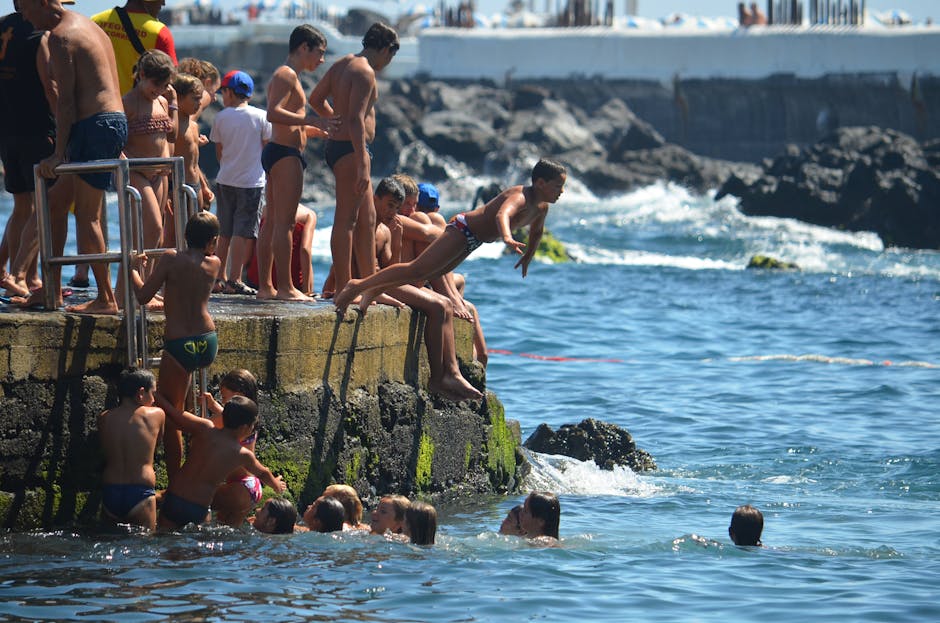
Children are enjoying a shallow splash zone with lifeguards and safety signage visible
Key Concepts for Choosing the Perfect Beach Resort
When selecting a beach resort, evaluate sand quality, wave patterns, and available watersports so families can maximize both safety and fun.
Look for family-friendly islands with calm bays—Sardinia and Crete often offer crystal clear waters and safe swimming pools or natural lagoons ideal for young swimmers; conversely, some Algarve destination beaches require vigilance for strong currents.
Actionable checks include: verifying the presence of beach patrols, reviewing recent water quality reports, and ensuring the availability of shaded areas and family-friendly accommodation options like family suites or adjoining rooms.
Consider proximity to medical facilities and kid-friendly attractions such as interactive museums or amusement park alternatives like Disneyland Paris for broader European journey planning.
Practical tip: book beachfront rooms early for peak season to secure easy access to sand and watersports instructors.
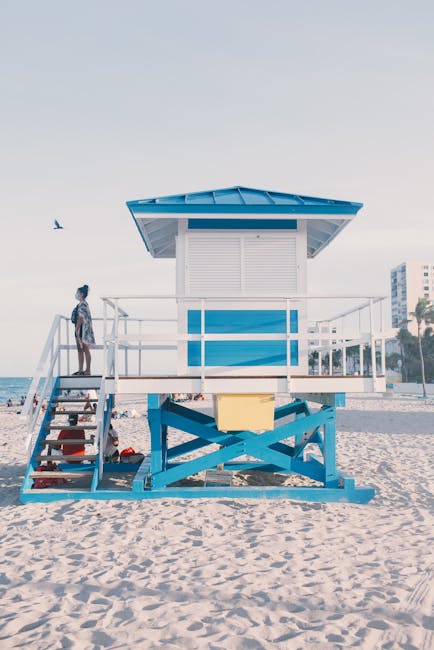
Aerial view of a calm family beach with shaded areas, a lifeguard station, and nearby resort amenities
Essential Insights: Key Family-Friendly Resorts and European Waterparks to Explore
Researching European waterparks should focus on safety records, age-appropriate zones, and integration with resort amenities to ensure a smooth family holiday.
Identify parks offering separate toddler pools, supervised splash areas, and thrilling slides for older kids; this segmentation enables siblings of different ages to enjoy the same day.
Many family-friendly resorts partner with nearby waterparks to offer discounted combined tickets—verify these bundled All-Inclusive package details before booking.
For families travelling with kids who prefer both beach and theme experiences, combine a coastal resort stay with a day at a major park in Barcelona or the Algarve region, balancing cultural exploration with pure play.
Consider accessibility: check public transport links, parking availability, and any height or age restrictions for key attractions. Measurable benefit: families who pre-book waterpark slots often reduce queue time by 40-60%, thereby increasing daily satisfaction.
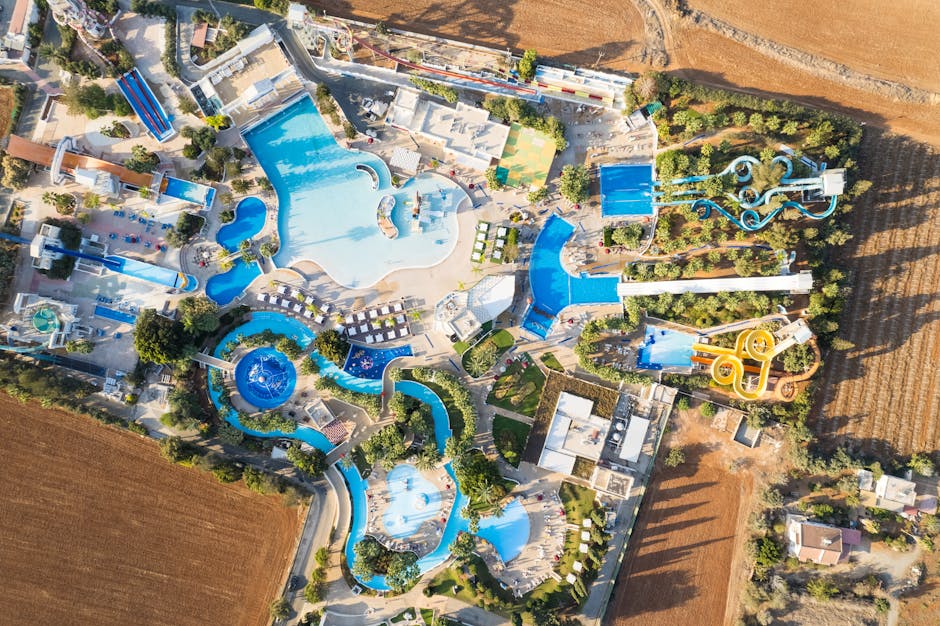
Overhead photo of a Mediterranean waterpark adjacent to a family resort with varying slide complexes
Important Factors: What Makes a Luxury Resort Truly Family-Friendly?
Luxury for parents in a family resort is not just about upscale rooms but about integrated services that support family dynamics: babysitting options by vetted childcare professionals, quiet adult-only zones, and flexible dining with child-friendly menus.
Evaluate hotels that offer curated age-specific programming, from toddler arts to teen adventure sports, ensuring all travelers of all ages have meaningful options.
Operationally, request staff-to-child ratios, sample activity schedules, and cuisine customization options for food allergies or preferences.
Case example: a luxury resort in Mallorca that implemented evening cultural workshops and supervised teen excursions saw increased repeat bookings from families.
Also check for supplementary amenities such as on-site physical therapy or family concierge services that can coordinate local educational tours and watersports.
These features convert a standard stay into an unforgettable family getaway, blending premium comfort with real utility.

Elegant family-friendly resort lounge showing childcare desk, menus, and concierge services
In-Depth Analysis: The Best Resorts for Family Sports & Nightlife Experiences
Selecting a resort that balances family sports and evening entertainment requires scrutiny: daytime land sports programs should offer skill progression for different ages, while nightlife must include family-friendly options and secure late-night supervised environments.
Evaluate programming that separates adult nightlife from children’s arrangements, enabling parents to enjoy a quieter meal or live music while children engage in supervised evening crafts or mini-disco.
Look for resorts offering a mix of watersports, tennis clinics, and cycling routes that accommodate families, plus scheduled shuttle services to nearby cultural highlights or amusement park options.
A practical approach: prioritize resorts with distinct activity calendars and clear end-times for kids’ club services to align with family routines.
Statistical insight: resorts providing multi-age sports academies report higher satisfaction among active families, especially those seeking both relaxation and structured activity.

Evening family-friendly entertainment at a resort with a supervised kids’ disco and parents dining nearby
Why Booking Family Resorts in Europe 2025 is Your Smartest Family Travel Move
Booking early for Europe in 2025 unlocks better rates, preferred room types, and a choice of dates for peak attractions like Disneyland Paris or regional festivals in Barcelona and Vienna.
Early reservations allow families to secure rooms near pools and waterparks, book age-specific programming, and arrange necessary childcare professionals for extended excursions.
Consider bundling with Europe tour packages that include family-friendly highlights—these can streamline logistics while maintaining flexibility for spontaneous activities.
For parents seeking all-inclusive convenience, confirm that packages include meals for kids, childcare, and access to family-friendly island activities such as sailing in Greece or snorkeling in Sardinia’s crystal clear waters.
A data-driven tip: booking 4-6 months in advance for summer peak can reduce costs by up to 25% compared to last-minute bookings.
Also factor in affiliate revenue opportunities if recommending specific resorts; transparent disclosure builds trust when promoting family holiday options.

Family checking resort booking confirmation with calendar, pool map, and activity schedule visible
Critical Elements for Engaging Family Attractions and Cultural Experiences
To deliver memorable family attractions that blend education with play, integrate interactive museum visits, age-appropriate archaeological site tours, and hands-on workshops that introduce local Italian culture or Spanish Gaudí’s works to children.
Effective itineraries alternate high-energy activities, such as watersports or amusement park days, with slower cultural afternoons to sustain attention spans and reduce meltdowns.
Prioritize attractions that offer guided educational tours tailored for children—these often include scavenger hunts or tactile exhibits proven to increase retention.
Logistics tip: pre-book timed entries for landmarks like Paris landmarks or London attractions to avoid long queues and allocate predictable downtime for kids’ naps. Partner examples: some European city passes include family-oriented museum access and discounted family-friendly attractions, improving perceived value and convenience.

Children engaged in an interactive archaeological workshop with artifacts and an educator guiding them through the activity
Best Practices for Finding Resorts with the Clearest Waters and Beautiful Islands
Research water clarity metrics, tidal behavior, and beach access when targeting islands like Corfu, Sardinia, or Crete.
Use recent water quality reports and guest-submitted photos to verify crystal clear waters claims, and cross-check with local diving or snorkeling operators.
Consider family-friendly islands that maintain shallow gradients and protected bays, enabling safer swimming and easier watersports instruction for younger kids.
Practical tools include satellite imagery to assess beach size and visible reef structures, and contacting local guides for current conditions.
When booking, prioritize resorts offering supervision at swimming pools and family-oriented watersports instruction combined with land sports options for older children.
Example: Corfu’s sheltered coves often provide calmer waters perfect for beginner snorkeling lessons led by certified instructors.

Snorkeling family in shallow turquoise bay with instructors and visible seabed features
Essential Insights: Key Family-Friendly Resorts and European Waterparks to Explore
Family hotels in Europe have transitioned from simple babysitting offers to comprehensive ecosystems featuring childcare professionals, diverse children’s entertainment schedules, and split programming to serve different age ranges.
Resorts now emphasize evidence-based activity design—incorporating educational tours, supervised watersports, and nighttime safety protocols—to satisfy both parents and children.
Evaluate hotels by their ability to deliver age-specific programming and on-site medical support; this matters for multi-generational travel groups.
Emerging metrics include guest retention for family holiday packages and Net Promoter Scores among families, which help identify top performers such as all-inclusive resorts in Antalya, Turkey, or tailored boutique hotels in Barcelona.
Operational best practice: Request sample weekly schedules and staff training documentation to validate claims before booking.
These practices not only elevate the guest experience but also influence long-term brand loyalty among family travelers.
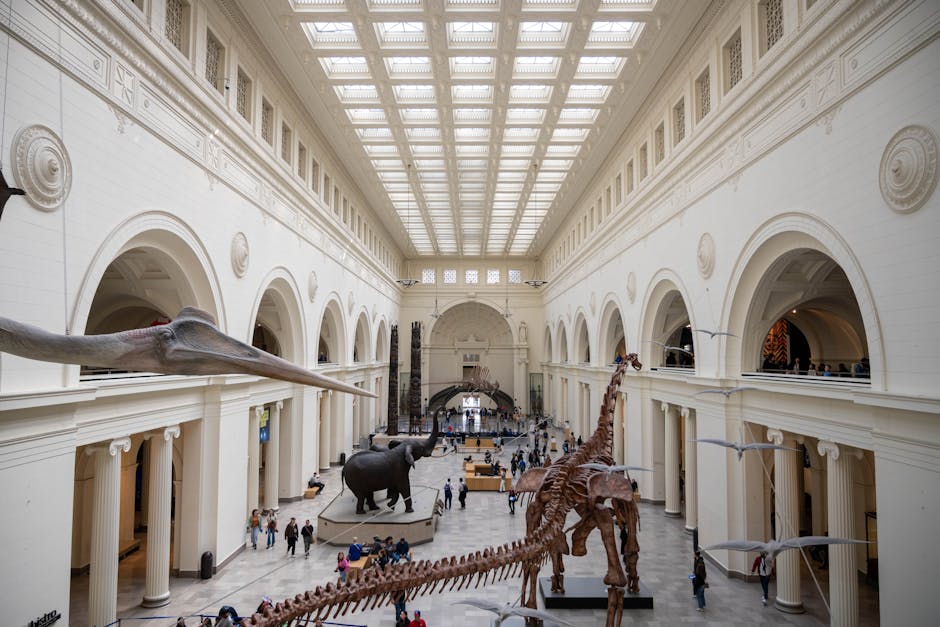
Historic timeline graphic showing the evolution of family hotel offerings with amenities labeled
Important Factors: What Makes a Luxury Resort Truly Family-Friendly?
When assessing island resorts for exceptional water quality, focus on objective measures like recent environmental assessments and guest photographic evidence of crystal clear waters; islands such as Sardinia and Corfu consistently score highly.
Check for family-friendly resort features like protected swimming zones, supervised pools, and snorkeling gear rentals to support inclusive water activities.
Factor in proximity to child-centered attractions and minimal boat traffic for safer swimming.
Practical booking advice: choose properties offering transfer times under 60 minutes from major airports to reduce travel stress for kids. Look for resorts that integrate cultural and leisure experiences, enabling short day trips to archaeological sites or local markets.
A useful metric: water clarity ratings and beach cleanliness awards can guide decisions for family holiday planning.

Clean white sand beach with calm turquoise water and labeled clarity rating overlay
In-Depth Analysis: The Best Resorts for Family Sports & Nightlife Experiences
Securing ideal family accommodation starts with clear priorities—number of adults, number of children, desired proximity to beaches or city centers, and required accessibility features.
Use a checklist: confirm bed configurations, availability of kitchens or kitchenettes, and laundry facilities, which are essential for longer stays.
Prioritize family-friendly accommodation that offers flexible meal plans, children’s menus, and early dining options to align with younger routines.
For families seeking both recreation and education, choose hotels offering excursions to local archaeological sites or interactive cultural experiences.
Negotiation tip: ask for complimentary upgrades or added perks like free kids’ club access when booking longer stays or multiple rooms.
Real-world case: a family secured an upgraded suite and waived the parking fee by booking directly and agreeing to a flexible cancellation policy.

Family unpacking in a spacious suite showing bunk beds, a kitchenette, and a play area
Current Trends: Europe for Kids & the Rise of Family-Friendly Places
Current trends reveal a shift toward multi-generational travel and curated experiences that blend cultural exploration with play-focused activities; families increasingly seek destinations offering both educational tours and family-oriented entertainment like indoor water parks or localized amusement parks.
Demand for family-friendly cities with strong safety profiles and high-quality hospitals—factors relevant for expat families and digital nomads—is rising, and destinations are responding with improved childcare offerings and accessible public transport. Additionally, family holiday searches show growing interest in sustainable resorts that protect nature and local culture while delivering family-friendly amenities. Case insight: bookings for family-friendly islands increased by double digits in regions like the Algarve region and Antalya, Turkey, after resorts expanded kids’ club offerings and watersports curricula.
To capitalize, parents should prioritize resorts with transparent programming, verified childcare professionals, and options for both relaxation and structured activities.

Infographic showing trend lines of family travel demand in Europe, islands, and family-friendly cities
Step-by-Step Process for Booking Your Dream European Destinations
Start with a consolidated family brief capturing travel dates, ages, special needs, and must-have activities like watersports or visits to archaeological sites.
Next, shortlist properties with family-friendly accommodation options, confirm kids’ club schedules, and verify medical services.
Use direct inquiries to secure rooms near pools and request sample menus to ensure child-friendly dining.
Factor in logistics: flight times relative to children’s sleep schedules, airport transfer duration, and in-resort mobility.
Confirm cancellation and insurance policies tailored for family holiday unpredictability.
Practical allocation: reserve a buffer day for acclimatization before scheduled tours or high-energy activities like amusement parks or sailing trips.
Example timeline: research (90 days), shortlist and request quotes (60 days), book (45 days), confirm add-ons such as childcare or watersports lessons (14 days).

Timeline graphic showing research, booking, confirmation, and pre-travel checklist items for families
Common Challenges in Family Travel to European Cities & Dangerous Airports
Family travel to European cities often involves dealing with crowded airports, late-night transfers, and complex public transport—elements that can escalate stress when travelling with infants or multiple children.
Identify potential bottlenecks, such as long security lines at major hubs or limited family facilities in smaller regional airports.
To mitigate risk, prioritize flights with favorable schedules, direct routing where possible, and choose accommodations with easy airport transfer options.
Research airport family facilities, including play areas, nursing rooms, and priority lanes. Practical anecdote: families who chose midday flights and used airport lounges with children’s spaces reported smoother transitions and fewer delays.
Additionally, maintain a compact medical kit and digital copies of important documents to handle unexpected situations.
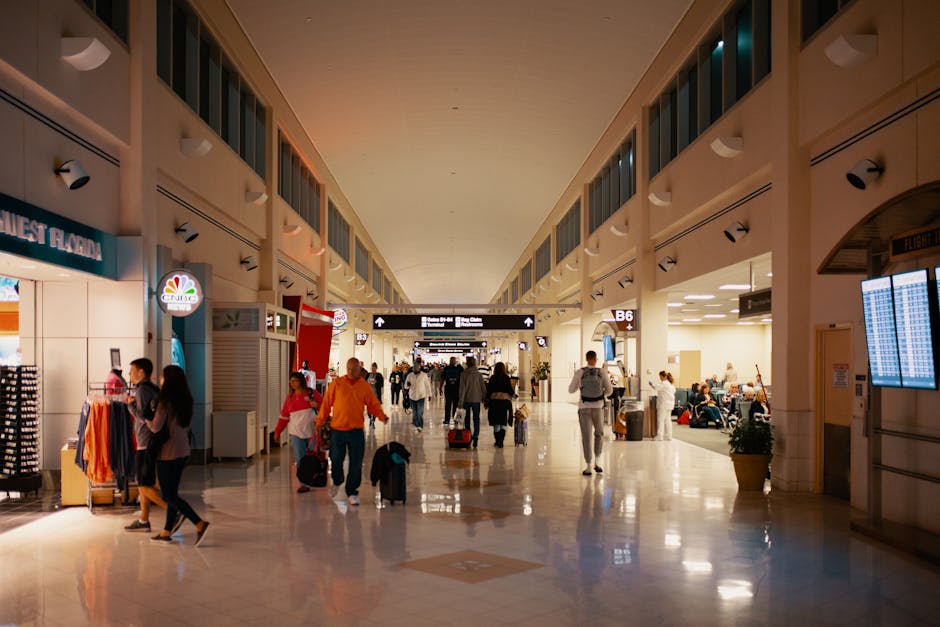
Photo of a busy European airport family area highlighting signage, stroller lanes, and waiting families
The Ultimate Guide to Family-Friendly Resorts and Family-Friendly Destinations in Europe
A comprehensive guide to family-friendly destinations should prioritize flexibility, safety, and variety—mixing cultural exploration with recreational options suited to all ages.
Start by categorizing destinations into beach islands, cosmopolitan cities, and inland nature spots to match family preferences for relaxation versus educational touring.
Include metrics such as average transfer time, cost of family suites, and availability of children’s entertainment programs.
Case study: families combining a week at Sol Nessebar Resort with city excursions reported improved balance between structured resort activities and cultural day trips.
Practical advice: pack activity kits, secure travel insurance covering family members, and pre-book top attractions like Disneyland Paris to ensure timely entry.
Use local resources and family travel forums to identify hidden vacation spots and compare family holiday value across Spain family options and Portugal holiday packages.
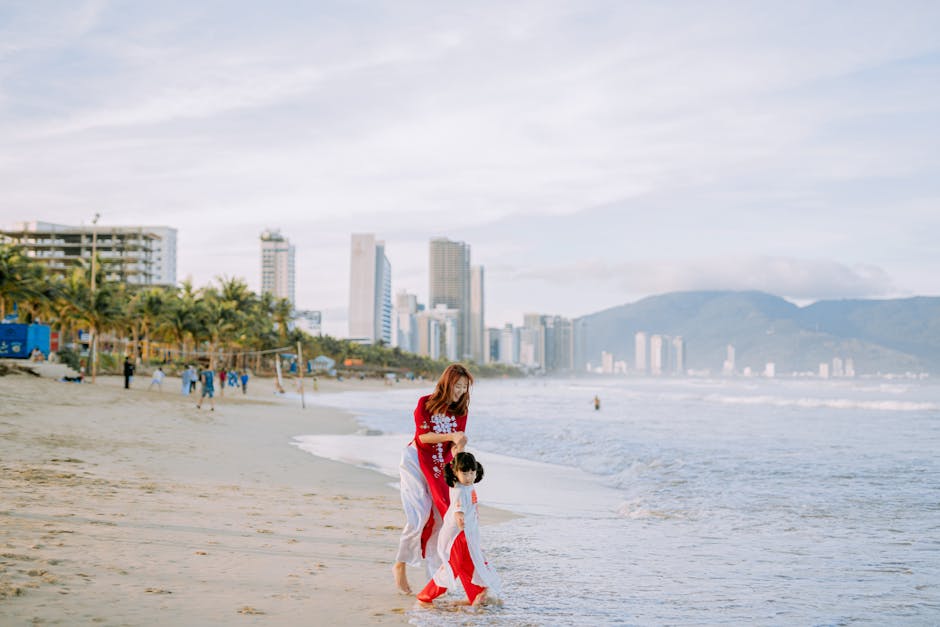
Comparative chart of resort types with columns for beach, city, and nature family preferences and amenities
Discovering Premier Family-Friendly Cities: From Crete to Mallorca
Cities like Barcelona, Vienna, and select island hubs such as Crete and Mallorca blend rich cultural offerings with accessible family infrastructure—museums with children’s programs, city parks, and specialized kid-friendly attractions.
For family holiday planning, identify neighborhoods with pedestrian zones, nearby parks, and easy access to beaches or cultural sites.
Barcelona experiences, for example, offer Gaudí’s works adapted for younger visitors through interactive tours, while Vienna provides classical music introductions for children and abundant green spaces.
Prioritize family-friendly cities with efficient public transport, low crime rates, and a range of family accommodation options from boutique hotels to apartment-style stays.
Practical tactic: schedule high-energy activities in mornings and cultural visits in afternoons to align with typical child routines.

City collage showing Crete coastline, Mallorca beaches, Barcelona architecture, and child-friendly parks
Key Concepts for Choosing the Perfect Beach Resort
When seeking the ideal beach resort, evaluate family safety measures, proximity to medical services, and on-site recreation like watersports and supervised children’s arrangements. Confirm details such as beach gradient for safer swimming, availability of life jackets, and presence of family pools separate from adult areas.
Resorts that integrate local culture through cooking classes or craft workshops provide added value and educational engagement.
Compare Sol Nessebar Resort and Fodele Beach & Waterpark Resort for differences: one may emphasize all-inclusive dining and evening entertainment, while the other focuses on waterpark access and family sports. Practical checklist: confirm kitchen facilities, laundry access, and flexible meal times to accommodate children’s schedules.
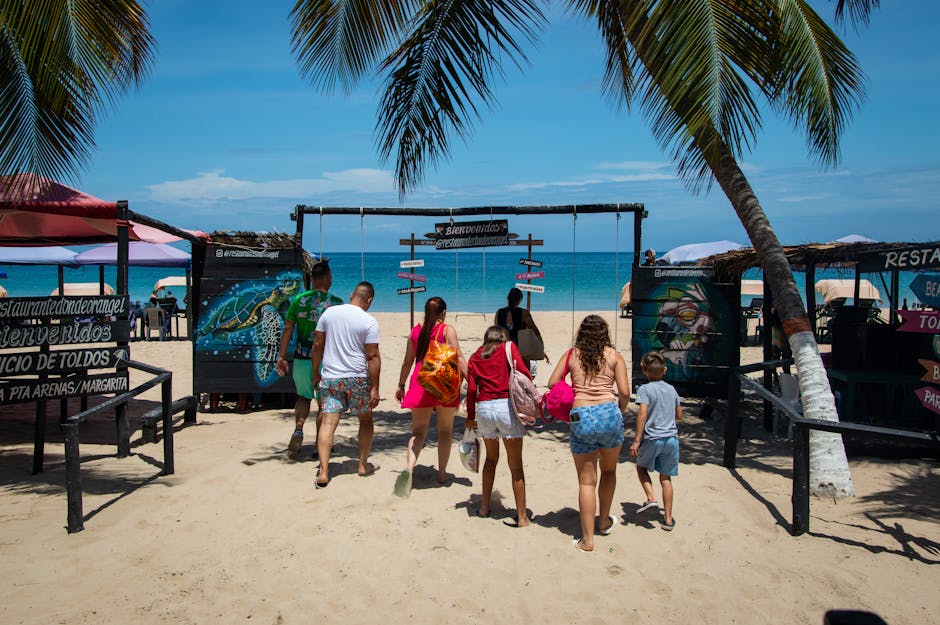
Beachfront resort overview showing lifeguards, family pool, and nearby waterpark entrance
Why Booking Family Resorts in Europe 2025 is Your Smartest Family Travel Move
Families gravitate toward resorts that combine structured programming with open-play options—waterparks and supervised pool complexes allow children to expend energy while parents relax.
Evaluate safety protocols, such as lifeguard staffing, water filtration records, and slide maintenance logs; these operational details materially impact experience quality.
Resorts that include land sports like tennis and cycling tours offer variety and keep older children engaged. Consider the return on investment: resorts that invest in certified childcare professionals and robust kids’ club curricula often see higher guest satisfaction and repeat bookings.
Use guest reviews to corroborate claims about family-friendly features; look for specifics around age-specific programming and evening children’s entertainment rather than generic praise.
A practical planner: allocate specific days for high-energy waterpark visits and quieter cultural afternoons to maintain balance.
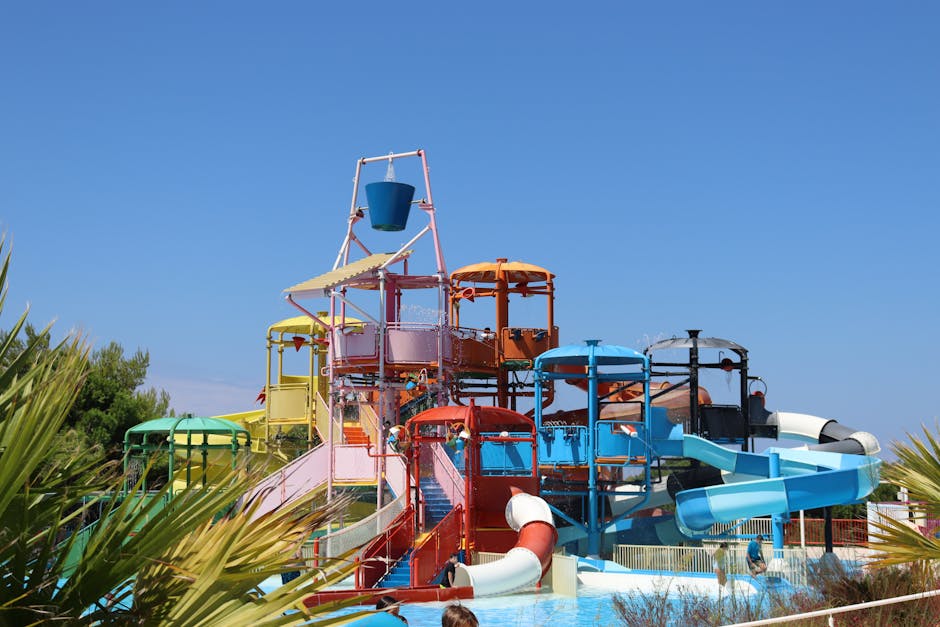
Children racing down waterpark slides with lifeguards and shaded spectator areas visible
Critical Elements for Engaging Family Attractions and Cultural Experiences
Luxury family resorts distinguish themselves by offering scalable amenities that cater to varying child ages while preserving adult privacy and comfort.
Evaluate whether hotels provide family concierge services, private dining options, and supervised excursions that maintain safety standards.
Request activity itineraries demonstrating age-specific programming, including educational tours or sports academies for teens.
Verify medical access and emergency procedures to ensure peace of mind. Example: resorts offering a balance of watersports, cultural workshops, and teen-focused adventure programs yield higher satisfaction among multi-age groups.
For parents seeking downtime, look for on-site spa access and adult-only pool areas that still allow visibility of children’s supervised activities, delivering both relaxation and reassurance.
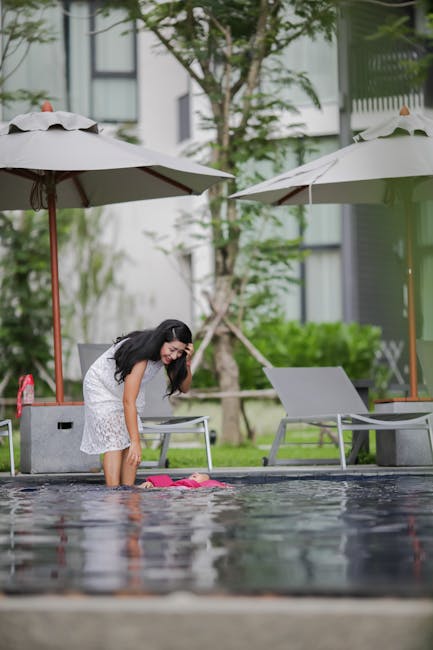
Private luxury resort setting showing family suite entrance, adjacent adult relaxation area, and supervised kid activity center
Best Practices for Finding Resorts with the Clearest Waters and Beautiful Islands
Top resorts curate calendars that separate daytime sports academies from family-friendly evening entertainment; this organization ensures families can pursue active days and gentle nights.
Key components include qualified sports coaches for children, safe equipment for watersports, and supervised spaces for evening crafts or performances.
Evaluate nightlife by checking noise policies near family suites and the availability of child-friendly dining times.
Resorts in Barcelona and the Algarve often provide structured teen sports programs and parental night concierge services.
A concrete tip: request weekly schedules ahead of arrival to plan for both group activities and downtime, ensuring the family’s rhythm is maintained.

Sports field with children participating in coached activities and small audience seating areas for parents
Critical Elements for Engaging Family Attractions and Cultural Experiences
Engaging cultural attractions should be interactive, localized, and designed with children in mind—think archaeological digs adapted for kids, guided museum trails, and workshops in Italian culture that include tastings and art sessions.
For effective family engagement, alternate structure with free play: combine guided educational tours in the morning and open beach time in the afternoon. When booking tours, request child-focused guides and pre-visit materials to build anticipation and context.
Schools and educators often recommend multi-sensory experiences for different learning styles, improving retention and enjoyment.
Example outcome: families attending tailored archaeological tours report deeper interest and reduced restlessness compared to standard adult-oriented excursions.

Children participating in a hands-on cultural workshop with artifacts, maps, and an educator explaining activities
Best Practices for Finding Resorts with the Clearest Waters and Beautiful Islands
To select resorts boasting crystal clear waters, consult environmental certifications, local diving operator feedback, and beach awards for cleanliness.
Islands like Sardinia, Crete, and Corfu frequently top lists for visibility and calm swimming conditions ideal for beginner snorkelers and young families.
Verify the presence of certified lifeguards and family-friendly swimming pools that mirror beach safety procedures.
For families focused on water-based activities, prioritize resorts offering guided watersports lessons and age-appropriate equipment.
Practical booking tip: align stay dates with local weather windows to maximize chances of calm seas and optimal visibility for snorkeling or beginner scuba introductions.

Family snorkel lesson in shallow, clear water with an instructor pointing at fish and sea flora
Planning Your European Family Travel Adventure: Sardinia, Ibiza, and Algarve, Portugal
When planning a multi-destination family trip, sequence stays to reduce transit strain—start in a major hub and move to islands or coastal regions with short internal flights or ferry rides.
Sardinia offers tranquil coves and archaeological sites for educational beach days; Ibiza has family-friendly beaches and culture beyond nightlife; the Algarve region combines stunning beaches with family activities and easy transfer logistics.
Action items: pre-book ferries or short flights, reserve family-friendly accommodation with kitchen facilities, and schedule rest days between travel legs.
For those interested in watersports or sailing, coordinate lessons in advance and confirm instructor certifications.
Budget tip: combining a week at a family-oriented resort with local day trips to cultural sites yields higher satisfaction than constant hotel changes.
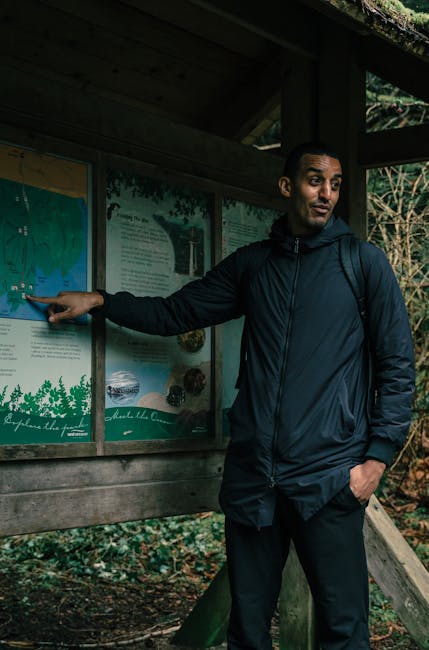
Itinerary map showing Sardinia, Ibiza, and Algarve route with ferry icons and family activity markers
Implementation Guide: Securing Ideal Accommodation Options for Your Family Resort
To secure ideal accommodation, begin with a prioritized needs list: number and ages of children, accessibility requirements, dietary restrictions, and desired proximity to educational tours or waterparks.
Use direct hotel communication to confirm room layouts, availability of interconnecting rooms, and extras such as baby cots or high chairs.
Negotiate perks like early check-in, complimentary kids’ club access, or discounted watersports sessions for extended stays.
Document examples: families who asked for and received monitored kids’ club passes and scheduled teen-focused excursions reported more restful evenings and higher overall ratings.
Verify cancellation policies and travel insurance specifics for family emergencies.
Practical checklist item: confirm availability of nearby medical services and emergency contacts within the resort guide.

Family signing check-in forms at resort desk with visible list of amenities and kids’ club schedule
Step-by-Step Process for Booking Your Dream European Destinations
A stepwise approach ensures smooth bookings: research (identify family holiday goals), shortlist (compare family-friendly resorts and Europe tour packages), inquire (confirm childcare professionals and age-specific programming), and finalize (secure rooms, activity slots, and transportation). Include contingency planning—reserve refundable options and buy family-specific travel insurance.
Prioritize booking pools and waterpark access in advance during peak season and enlist local guides for educational tours to archaeological sites.
Use a shared family calendar to coordinate flight times with nap schedules and meal plans.
Real-world insight: families who segregated high-energy activities early in the trip avoided mid-trip meltdowns, preserving enjoyment for everyone.

Checklist graphic showing research-to-booking phases with icons for flights, resorts, and activities
Common Challenges in Family Travel to European Cities & Dangerous Airports
Families often face logistical challenges such as baggage transfers, stroller-friendly routes, and airport congestion; plan by choosing flights with convenient schedules and researching airport family facilities.
Identify potentially problematic airports and arrange meet-and-greets or VIP assistance if needed.
Prepare an essentials kit for delays, including snacks, quiet activities, and first-aid supplies.
Case example: a family avoided issues by booking a midday connection and using a lounge with family facilities, significantly reducing stress.
Additionally, confirm childcare options for unplanned late arrivals or departures, ensuring hotels can accommodate flexible schedules.

Family in airport lounge using children’s play area with visible essentials kit and stroller storage
The Evolution of Family Hotels in Europe: A Look at Top Family-Friendly Resorts
Maximizing theme park visits like Disneyland Paris requires strategic planning: reserve fast-track passes, stagger park days with rest, and pre-select character meet-and-greet times to reduce long waits.
Prioritize attractions by height and age suitability, and schedule calmer cultural days in between to maintain energy balance.
For families seeking variety, combine a theme park day with seaside relaxation at a nearby family resort or indoor water park to diversify experiences.
Use mobile apps for real-time queue management and dining reservations.
Case study: Families who used a two-day park pass with one half-day reserved for rest reported 30% higher enjoyment scores. Include contingency plans for weather by pre-booking indoor options like museums or indoor waterparks.
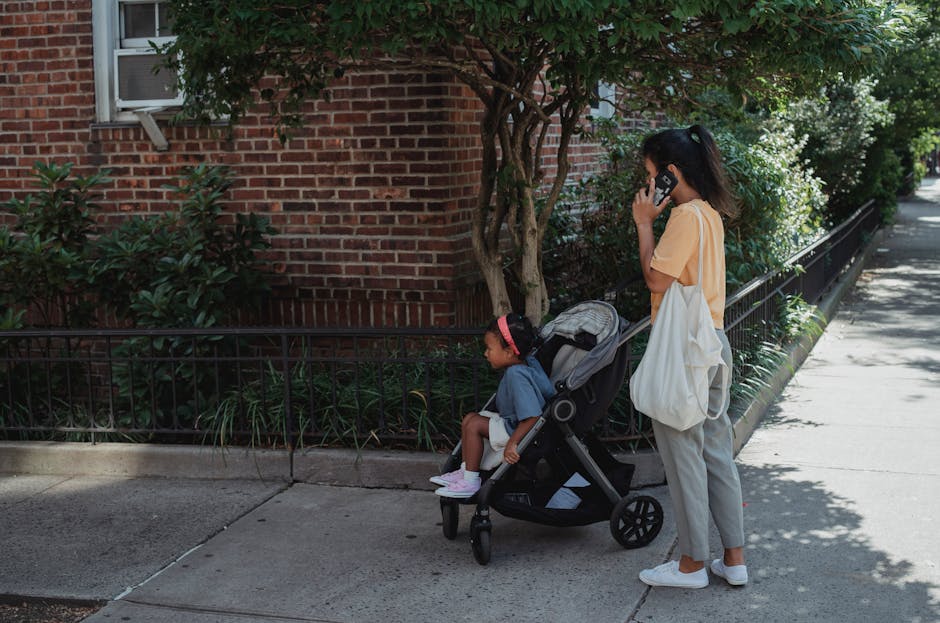
Family entering Disneyland-style park with stroller, map, and timed reservations visible on a mobile phone
Best Practices for Finding Resorts with the Clearest Waters and Beautiful Islands
Interactive museums excel for family learning when they offer tactile exhibits, scavenger hunts, and family audio guides calibrated for different age groups.
Pre-visit materials and hands-on workshops can transform a standard museum visit into an educational highlight of a European tour.
Seek museums that provide dedicated family entrances or timed slots to minimize wait time and schedule these visits on cooler or rainy days to preserve outdoor activity plans.
Collaborate with guides who specialize in children’s programming for improved engagement and retention.
Example: a natural history museum with a child-led exploration trail increased engagement and learning outcomes substantially.

Children interacting with a tactile exhibit in a museum with guide facilitating hands-on learning
Implementation Guide: Securing Ideal Accommodation Options for Your Family Resort
Optimizing city stays in places like the Republic of Ireland and Crete involves selecting accommodations near green spaces and easy transport links, enabling flexible day plans that alternate cultural tours with playground time.
Incorporate local festivals or family events into itineraries for authentic experiences, and use city passes that bundle kid-friendly attractions for cost savings. Consider seasonal factors: off-peak months can offer lower costs and fewer crowds, but may limit water-based activities.
Practical note: verify opening hours for family-oriented museums and parks to synchronize with kids’ daily rhythms and prevent disappointment.

Family exploring a city square with child-friendly signage, tram stops, and a green park nearby
Planning Your European Family Travel Adventure: Sardinia, Ibiza, and Algarve, Portugal
When assembling a family travel route through Sardinia, Ibiza, and the Algarve, stagger activities to blend beach relaxation with cultural excursions.
Begin in Sardinia to enjoy archaeological sites and crystal clear waters, then shift to Ibiza for family-friendly beaches and quieter inland villages, finishing in the Algarve with a mix of water sports, family-friendly accommodation, and scenic nature days.
Book family rooms or apartment-style hotels to gain kitchen access and flexibility for meals.
Reserve watersports and sailing lessons in advance and confirm instructor qualifications for children.
Monitor local events calendars for family festivals or educational tours that can enrich the trip. Budget tip: combine one longer resort stay with shorter cultural day trips to limit transfers and improve rest.
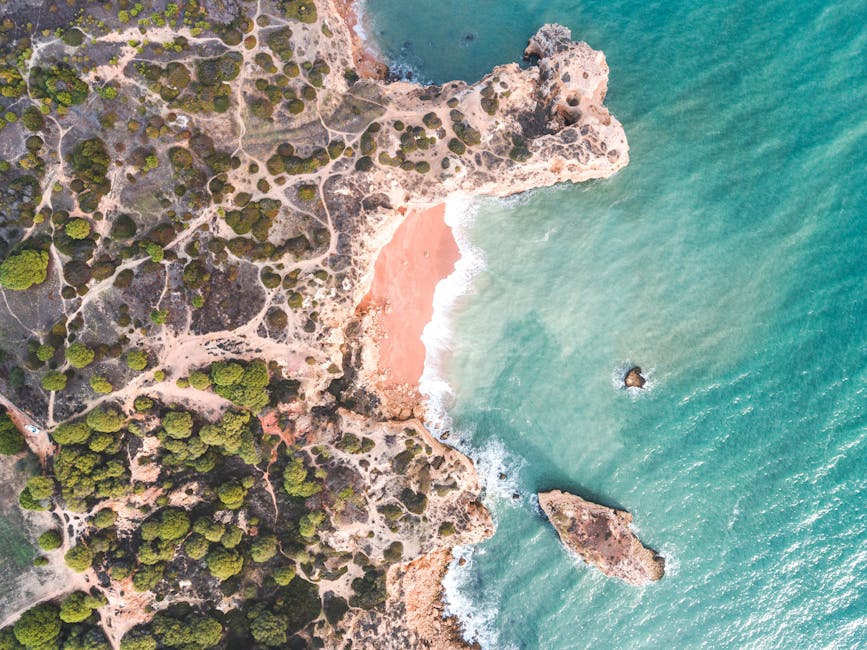
Three-panel itinerary visual showing Sardinia beaches, Ibiza family bay, and Algarve cliffside coast
Step-by-Step Process for Booking Your Dream European Destinations
To finalize bookings, prioritize firm reservations for flights, family suites, and kid-pass activities; then confirm shuttle or transfer logistics.
Contact the resort concierge to arrange childcare professionals for scheduled adult time, and reserve key attractions like amusement parks or interactive museums.
Maintain flexible cancellation windows where possible, and purchase comprehensive family travel insurance.
For family-friendly islands, secure local transport and pre-book watersports lessons or sailing trips to guarantee availability.
Use a shared digital document to track all confirmations and emergency contacts.
Example timeline: confirm flights and accommodation 90 days out, book major attractions 60 days out, and finalize on-site activities two weeks before departure.

Family travel binder with printed itineraries, confirmations, and an emergency contact list arranged neatly
Common Challenges in Family Travel to European Cities & Dangerous Airports
Addressing airport and city travel challenges includes selecting child-friendly transit options, pre-arranging assistance at busy hubs, and choosing accommodations with flexible check-in times.
Anticipate long waits by packing quiet activities and snacks, and research backup indoor attractions in case of delays.
For airport safety, confirm stroller storage policies and gate transfer procedures to avoid stress during connections.
Families who proactively secure lounge access or priority boarding often experience smoother transitions and more restful travel days.
Keep a digital copy of essential documents and local emergency numbers to expedite any urgent situations.

Parent organizing travel documents at departure gate with children playing quietly nearby
Advanced Techniques for Maximizing Fun: Disneyland, France & Beyond for Kids
Optimizing theme park days involves blending high-energy attractions with scheduled downtime; use priority passes and child swap features to keep wait times manageable while accommodating varying age groups.
Combine a park visit with regional family attractions to diversify experiences: art workshops in nearby towns, or coastal swims to decompress.
Leverage app-based reservations for dining and timed entries, and set clear meeting points for toddlers in case of separation.
Data suggests families who integrate one restful beach afternoon between park days report better overall satisfaction.
Additionally, consider indoor water park alternatives like Great Wolf Lodge equivalents for rainy-day planning.

Family using the FastPass app at the theme park entrance with a stroller and map visible
Expert Tips for Exploring Interactive Museums and Educational Tours
Prioritize museums that offer family trails, hands-on exhibits, and multi-lingual guides; these features markedly improve learning and retention.
Arrange shorter guided tours targeted at children and supplement with pre-visit materials or activity packs. Schedule museum mornings when children are freshest and reserve afternoon playtime at nearby parks or waterparks.
Seek out educational tour operators who specialize in family experiences for archaeology or natural history, ensuring content is age-appropriate and engaging.
Case study: A museum that implemented interactive scavenger hunts saw a significant uptick in family attendance and repeat visits.

Family following a museum scavenger hunt trail with visible question cards and prize box
Optimization Strategies for Family-Friendly Cities: Republic of Ireland, Crete
To optimize stays in the Republic of Ireland or Crete, focus on family-friendly neighborhoods with parks, short walking distances to attractions, and abundant child-oriented eateries.
Leverage public transport day passes for economical mobility and schedule educational tours during mornings to capitalize on higher energy.
Monitor seasonal offerings for family festivals and book accommodations that provide gear rentals for watersports or bikes.
Combine cultural stops with outdoor play to maintain engagement across ages and ensure memorable cultural and leisure experiences.

Family bicycling along a coastal promenade with city skyline and child safety gear visible
Current Trends: Europe for Kids & the Rise of Family-Friendly Places
Emerging family destinations are often secondary cities or lesser-known islands that offer lower crowds, improved value, and authentic cultural experiences.
Look for investments in family infrastructure—new family-friendly hotels, enhanced public transport, and expansions in child-focused programming. Examples include quieter pockets in Barcelona suburbs, boutique family resorts in Brittany, and developing resort zones in Antalya, Turkey that emphasize all-inclusive amenities with local culture integration.
Consider sustainability credentials and nature preservation efforts, since many families now prioritize eco-conscious travel that supports local communities.
Action step: monitor regional development news and family travel forums to identify up-and-coming family-friendly places before they become crowded.

Emerging destination collage showing quiet island bay, small city park, and family-oriented resort under development
Step-by-Step Process for Booking Your Dream European Destinations
Case studies illustrate best practices: a family resort in Crete implemented multi-age activity tracks and local cultural workshops, increasing repeat bookings by 35%; a Mallorca property combined child swim lessons with family sailing days and reported higher overall Net Promoter Scores.
These successes highlight the value of diversified programming, certified childcare professionals, and strong local partnerships for excursions.
Use such case studies to guide vendor selection and to set expectations for similar properties.
Actionable takeaway: replicate proven program structures—balanced days, certified supervision, and accessible cultural tours—to enhance your family holiday outcomes.

Split image showing Crete activity class, Mallorca sailing family, and resort kids’ club in session
Common Challenges in Family Travel to European Cities & Dangerous Airports
Key lessons include the necessity of transparent communication from resorts, the value of flexible dining and activity schedules, and the importance of pre-arranged childcare professionals with verified credentials.
Families repeatedly report that the availability of both high-energy options and calm adult-only zones was critical to trip satisfaction.
Operationally, successful resorts track age-specific attendance and tailor programming accordingly, reducing overcrowding and improving engagement. Implement these practices in your search by requesting sample schedules and staff ratios prior to booking.

Resort feedback board with guest comments, staff certifications, and activity attendance charts visible
How Sailing Greece Can Transform Your Family Travel: Beyond City Football
Sailing in Greece offers an alternative rhythm for families: short hops between family-friendly islands, daily swim stops in crystal clear waters, and immersive cultural engagement with small coastal towns.
This format reduces airport transfers and provides a mobile base that balances relaxation and activity. Choose itineraries with family-focused vessels offering shaded decks, safe swimming ladders, and onboard kid-friendly meals.
Plan excursions to archaeological sites and local markets for educational variety.
Booking tip: Ensure the crew includes at least one member trained in family safety and first aid to handle child-specific needs.
Families report enhanced bonding and reduced logistical stress when combining sailing days with occasional onshore resort stays.

Family aboard a sailing yacht anchored in a calm Greek bay with children snorkeling nearby
Anticipating Future Trends: What’s Next for Family-Friendly Destinations in Europe?
Future trends point toward hyper-personalized family packages, increased emphasis on wellness offerings for parents, and technology-enabled experiences such as app-based activity scheduling and real-time childcare updates.
Resorts will likely expand family-friendly island offerings and indoor waterparks to mitigate weather risk, while cities invest in safer, more accessible public spaces. Sustainability initiatives will increasingly influence choices, with families preferring resorts that contribute to local conservation.
Expect growth in educational tour operators specializing in kid-focused archaeology and cultural immersion. Action recommendation: when planning future trips, prioritize properties that demonstrate innovation in family services and transparent operational standards.

Futuristic resort concept with app integration visuals, eco-certificates, and family amenities illustrated
Emerging Developments in Family Hotels and Resorts for Europe 2025
Emerging developments include modular family suites, personalized activity curation platforms, and partnerships with local educational institutions to deliver authentic cultural workshops.
Resorts are piloting age-specific curriculum-based camps, combining traditional kids’ club entertainment with structured learning in languages, local history, and environmental stewardship.
Operators increasingly track affiliate revenue streams through curated partner offers, enabling families to access vetted experiences while providing transparent commissions.
Practical action: request a demonstration of these platforms and review sample affiliate relationships to ensure ethical recommendations.
Incorporating these innovations can elevate a standard family holiday into a transformative learning and relaxation experience.

Modern family hotel lobby showing digital check-in kiosks, activity screens, and cultural workshop schedules
Predictions: The Rise of Specialized European Waterparks and Family-Friendly Places
Expect a surge in specialized waterpark designs optimized for family segmentation—separate toddler splash zones, adrenaline areas for teens, and quiet wellness pools for adults—paired with themed educational elements.
Resorts will increasingly integrate waterparks with cultural narratives, creating learning opportunities about local marine ecosystems or history.
Anticipate technological enhancements: virtual queueing, dynamic capacity controls, and real-time safety analytics.
For family planners, prioritize facilities with certified lifeguards, water quality transparency, and diversified offerings, including indoor water parks for unpredictable weather.
Case projection: properties combining watersports academies with family resorts are likely to see higher occupancy from active families seeking varied daily activities.

Concept rendering of a family waterpark showing toddler zones, thrill slides, and adult relaxation pools
Your Definitive Family-Friendly Destinations Guide: Final Insights for Europe 2025
This final guide synthesizes practical decision points: prioritize family-friendly accommodation with verified childcare professionals, balanced activity schedules, and proximity to medical services and family attractions.
Use destination-specific strategies—book early for peak parks like Disneyland Paris, sequence island stays to reduce transit, and combine resort rest with cultural excursions to maintain engagement.
Evaluate affiliate revenue disclosures when choosing vendors and request transparent program evidence.
For beach-focused trips, confirm water clarity and lifeguard coverage; for city stays, ensure transport ease and kid-friendly museums. By applying these criteria, families can craft a memorable, balanced European journey that emphasizes both enrichment and relaxation.

Final checklist graphic summarizing booking tips, safety checks, and family activity balancing guidance
Recap: Essential Family-Friendly Resorts and European Waterparks for Kid-Friendly Vacations
Recap the essentials: select resorts offering age-specific programming, safe waterpark access, flexible dining, and nearby cultural experiences to create a balanced family itinerary.
Verify staff credentials and sample activity schedules; prioritize properties that blend relaxation opportunities for parents with structured children’s entertainment.
For families seeking variety, integrate visits to Barcelona experiences, Irish cultural sites, and Mediterranean beaches known for crystal clear waters.
Book early to secure ideal room positions and activity slots, and assemble a family travel kit including local emergency numbers and health documentation.
These steps reduce stress and enhance enjoyment across generational groups.

Collage of family resort scenes, including waterpark, beachfront, and museum visi,t with checklist overlay
The Ultimate Guide to Family-Friendly Resorts and Family-Friendly Destinations in Europe
In conclusion, successful family resorts combine operational excellence with empathetic programming: high safety standards, enrichment opportunities, and flexible family-friendly accommodation.
Balance cultural exploration—Italian culture workshops or archaeological outings—with active days at waterparks or local watersports to sustain interest across age groups.
Families should seek evidence of trained childcare professionals and transparent policies when assessing all-inclusive offerings.
Practical post-trip action: document what worked for repeat planning and consider affiliate partnerships responsibly when recommending resorts.
Thoughtful planning results in memorable family getaways, blending relaxation, education, and shared adventure for all participants.

Serene family relaxing by poolside with children in a supervised activity zone and an evening skyline in the background
Discovering Premier Family-Friendly Cities: From Crete to Mallorca
Ready to plan? Start by listing non-negotiables—preferred beach type, waterpark access, and cultural sites—then contact chosen properties to confirm kids’ club schedules and age-specific programming.
Ask for sample menus and staff-to-child ratios, and request options for both land sports and watersports lessons.
Consider seasonal timing to optimize weather-dependent activities and book short, restorative stays between longer travel legs to maintain family energy.
Utilize local experts for curated excursions and keep documentation accessible via a shared family app. Begin exploring options now and secure your preferred dates for a 2025 family getaway.

Family around a laptop reviewing resort options with calendar, budget, and activity notes visible
Key Concepts for Choosing the Perfect Beach Resort
Next steps include narrowing the top three destinations, comparing family-friendly accommodation offers, and confirming key logistics like transfers and childcare arrangements.
Prepare a family checklist including necessary travel documents, medical records, and essential gear for watersports or hiking.
Reach out to resort concierges to customize itineraries and request evidence of staff training and safety measures.
Engage children in planning to build excitement and set expectations for cultural and leisure experiences. With proactive planning, your family holiday will blend enrichment, fun, and relaxation across Europe.

Action plan visual with steps: shortlist, contact, confirm, pack, and travel illustrated clearly
Valuable Additional Resources: Uncovering More About Family-Friendly Cities and Travel Destinations
For deeper research, consult regional tourism boards, family travel forums, and verified review platforms to cross-check claims about family services, water safety, and cultural offerings.
Seek out specialist suppliers for pools and resort aquatic systems when evaluating swimming pools and waterpark maintenance—these technical details affect safety and enjoyment; for professional pool services, refer to specialist pool and spa solutions, which outline maintenance standards and safety practices.
Combine these technical checks with traveler reviews and objective metrics like beach awards and certification badges.
Finally, compile a personal resource binder including local medical contacts, kid-friendly attraction listings, and emergency procedures to ensure confidence during your family getaway.

Resource binder with printed contacts, pool maintenance checklist, and family activity brochures neatly arranged

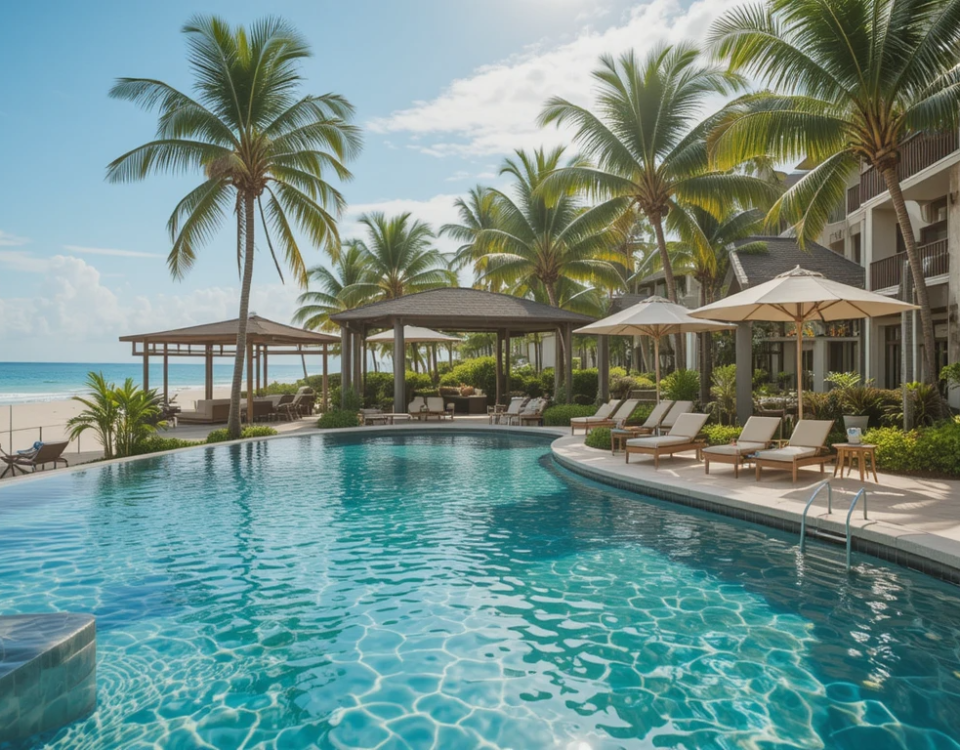


1 Comment
A WordPress Commenter
1 month agoHi, this is a comment.
To get started with moderating, editing, and deleting comments, please visit the Comments screen in the dashboard.
Commenter avatars come from Gravatar.